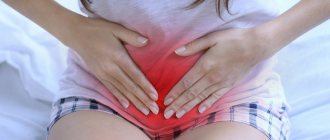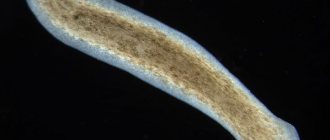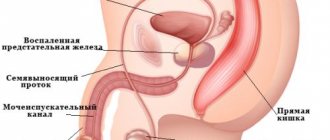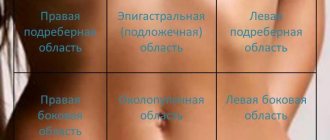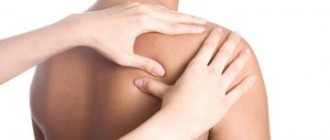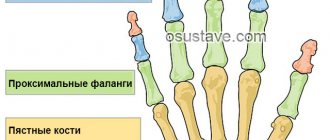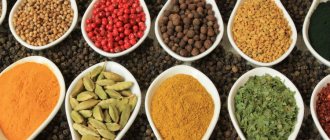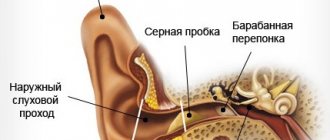Forms
Doctors in the field of gastroenterology usually distinguish the following forms of pain in the esophagus:
- Primary – determined by dysfunction of nerve endings;
- Reflex – provoked by the course of concomitant diseases or the influence of pathological conditions.
Considering the placement of signs, pain can affect:
- Upper part of the esophagus;
- Esophageal sphincter;
- End of the esophagus.
When diagnosing, the specialist pays attention to the nature of the pain, which can be:
- Aching and paroxysmal;
- Sharp and dull;
- Drawing and regular;
- Piercing and dagger.
In addition, pain in the esophagus can be acute or chronic.
Objective methods for examining the esophagus
An initial examination and palpation allow the doctor to decide on further diagnostic measures for the diseased esophagus.
Diagnosis of esophageal diseases begins with a general examination and local examination. During the general physical examination of the patient, attention is paid to the larynx. The color and condition of the mucous membrane are important. Often an alarming signal is the appearance of an unpleasant odor from the mouth, which we habitually ignore. It is necessary to check whether there are any deviations in the functioning of the musculoskeletal system. Additional signs that may be detected during a general examination: exhaustion, roughening or discoloration of the skin, the presence of bulges, temperature, facial expression disturbances, nervous disorders, swelling and venous patterns.
Local examination of the esophagus consists of palpation of the lymph nodes, palpation of the neck, radiography, esophagoscopy, percussion (tapping and listening). When the esophagus is narrowed, auscultation (listening to the sound as it passes through the esophagus) is effective.
Pain in the esophagus in the chest area when swallowing
Pain in the chest when swallowing is a typical symptom in gastroenterology, since in all cases it indicates the formation of one or another pathological process that affects an organ of the digestive system such as the esophagus. The most common source of this symptom is spasm of the esophagus, but doctors identify many more predisposing conditions that have a pathological basis.
In most situations, pain when swallowing with placement in the sternum is the first sign that indicates the formation of any disease. The specificity of this symptom lies in its focus - often pain in the chest is perceived by patients as a sign of disruption of the heart and blood vessels. At the same time, patients resort to medical care specifically from a cardiologist and carry out unnecessary diagnostics. At this moment, a completely different disease progresses in the body.
The most common signs are:
- Heartburn and belching;
- Burning and discomfort in the sternum; irradiation of pain to the area between the shoulder blades and the heart. Less commonly observed is the location of pain in the back and upper extremities;
- Impaired process of swallowing food - with a minor disorder of the esophagus, dysphagia is associated only with solid food, but if the situation worsens, even water will not be able to pass through the esophagus, which threatens sudden weight loss and weakening;
- Significant increase in pain when eating;
- Soreness and cough in the esophagus;
- Increased salivation;
- Flatulence;
- Attacks of nausea and vomiting;
- Intestinal disorder – patients often complain of constipation, less often of diarrhea;
- Increase in body temperature;
- Prolonged fever;
- Aversion to food;
- Dyspnea.
This symptomatology does not mean that clinical manifestations will be limited only to this. Given the etiology of the disease, some symptoms may fade into the background.
Currently reading: Diseases and symptoms of the esophageal mucosa
Esophagitis
A fairly common disease, often occurring nowadays. It develops primarily as a result of poor nutrition. Trauma to the organ caused by a fish bone can also have an effect. Sources of chronic infection in the body can also cause inflammation of the mucous membrane.
Inflammation of the esophagus has quite characteristic symptoms. People suffer from heartburn, burning in the chest, and dysphagia. Increased salivation and sore throat also plague patients with esophagitis.
Often, inflammation of the esophageal mucosa is associated with poor nutrition!
Symptoms and treatment always correlate with each other. In order to relieve the symptoms of esophagitis, you need to follow a proper, gentle diet. Eating small portions, frequent meals and following a low-fat diet, as well as eating less spicy foods, can help manage heartburn attacks. Food should be pureed and warm. Vegetable soups, milk, cereals are the best choice.
While the process subsides, it is necessary to maintain a diet to prevent exacerbation of the esophageal disease. Maintaining the normal course of a chronic disease requires willpower and time from a person.
Treatment
Despite a wide variety of conditions, treatment of chest pain when swallowing food can be blocked using the following techniques:
- The use of medications - these can be painkillers, sedatives, antacids, general strengthening medications;
- Physiotherapeutic procedures;
- Adhering to a gentle diet;
- Bougienage to expand the esophageal tube;
- Elimination of malignant or benign tumors;
- Chemistry;
- The use of alternative medicine methods is carried out only under the strict supervision of a specialist.
In any case, the question of using any treatment method must be resolved personally with each patient.
X-ray examination of the esophagus
It is a common means of diagnosing the esophagus. Thanks to radiation examination, it is possible to identify pathological changes in the structure of this organ and draw conclusions about the motor disorders present. There are many radiography techniques, such as orthodiagraphy (used to detect deformation of the esophagus), teleradiography (the radiograph is viewed using a fluorescent screen), teleradiography (monitors the avoidance of foreign body deformation), stereoradiography (achieves a three-dimensional picture, determines the location of pathologies), X-ray kymography ( notes peristaltic movements) and others.
Before taking an x-ray, it is necessary to consume barium sulfate in the form of a solution, sometimes iodine lipol is added to it. This makes it difficult for X-rays to penetrate. The procedure is preceded by careful preparation. It is carried out exclusively on an empty stomach. During the x-ray, the patient's lower body is raised slightly higher. It would be prudent to prepare accurate local photographs in case of dyspepsia, suspected induration, malignant tumors, achalasia or foreign bodies.
Gives it to the back
Patients can feel discomfort in any part of the organ. Often spasms are observed in the sphinctral region, since there are a large number of nerve endings there. Certain patients may feel sharp, cutting pain and also feel a lump in the chest area. In some situations, discomfort is perceived as a sign of cardiac problems. The duration of pain can be from several minutes to several hours.
As soon as the patient feels discomfort, he does not need to take medications, since their incorrect use can cause serious complications. In such a situation, you should go to the hospital to consult a doctor. The specialist will conduct a comprehensive examination, thanks to which he will find the cause of pain. After which he will determine drug therapy for the patient.
The course of treatment includes:
- Absolute refusal of harmful foods. Patients with this disorder are prohibited from eating fatty and spicy foods. You need to give up fast food, offal, and fried foods;
- Overeating and eating on the go is completely prohibited. Alcoholic drinks are prohibited;
- To block pain, medications are prescribed, for example, No-shpa;
- To normalize the level of gastric acidity, patients are advised to use the drugs Cerucal, Ranitidine, Phosphalugel;
- To restore muscle tone, metoclopromide tablets are prescribed, which stop nausea and vomiting;
- For excessive heartburn, it is possible to use tinctures and decoctions that are prepared from medicinal herbs (chamomile, yarrow, etc.). They should be consumed up to 4 times a day;
- If a course of drug treatment has been completed and there is no result, the patient undergoes surgery.
It is imperative to contact a specialist in time for treatment, since the lack of therapy leads to complications.
Possible reasons
Pain in the esophagus is an alarming symptom. Often it indicates stomach problems and even tumor growth. Anatomically, the organ is close to the trachea, aorta, and lymphatic duct. Chest pain does not indicate 100% esophageal disease.
Esophagitis
Esophagitis is an inflammation of the mucous membrane of an organ. The main reason is the reflux of gastric juice. The acid-peptic factor destroys the mucous membrane, causing arrosion of the nerve endings. Various infections can also cause inflammation: candidiasis (thrush), herpes, cytomegalovirus. Infectious esophagitis develops in a person with reduced immunity.
https://youtu.be/FDbvkwKuxiY
Symptoms:
- swallowing disorder;
- heartburn;
- pain in the mouth and along the esophagus;
- feeling of a “lump”;
- nausea and vomiting.
Pain in the esophagus is the most characteristic sign of pathology. The symptom requires immediate diagnosis and initiation of treatment.
Reflux
Reflux esophagitis is the most common pathology of the gastrointestinal tract. Gastroesophageal reflux disease (GERD) is a disease that causes retrograde movement of food from the stomach into the esophagus. With GERD, the sphincter is relaxed and unable to hold food. A full stomach contracts and throws its contents upward. Patients experience severe attacks of pain in the esophagus.
Cancer
Esophageal cancer is an oncological pathology characterized by high aggressiveness.
What causes cancer:
- constant consumption of hot, hard, poorly chewed food;
- drinking strong alcohol;
- smoking;
- Barrett's esophagus (changes in the epithelium), resulting from reflux esophagitis;
- diverticula, polyps and mucosal leukoplakia;
- burns with scarring.
Patients are concerned about pain that increases when swallowing, regurgitation, and increased salivation. Since the tumor blocks the lumen, the swallowing process is disrupted. At the last stage, a person cannot even swallow liquid.
Traumatic injuries
Damage can be open or closed. Most often they appear due to the ingestion of foreign bodies. A very common cause is thin fish bones entering the organ. Perforation of the muscle wall occurs. Dysphagia, subcutaneous emphysema (accumulation of air under the skin), and severe pain along the esophagus occur. Pain occurs due to damage to the intramural nerve plexuses.
Why does unbearable pain still occur? This symptom is characteristic of circular injuries, that is, complete rupture of an organ. Such injuries occur in accidents or in combat zones.
Burn
Burns can be thermal and chemical. The latter are the most common. Injuries are typical for young children who, out of curiosity or ignorance, drink an unknown liquid.
Symptoms characteristic of burns:
- severe pain in the mouth, behind the sternum, in the upper abdomen;
- swelling of the gastrointestinal tract;
- hoarseness of voice;
- dysphagia;
- profuse bleeding;
- feeling as if something was stuck behind the sternum;
- esophageal-bronchial fistulas;
- fainting.
The acute period lasts several days, after which a phase of epithelization and scarring begins. This stage is characterized by stenosis (narrowing) of the esophagus. Patients develop obstruction with the addition of dystrophy. It is important to promptly correct burn scars.
Diaphragmatic hernia
A diaphragmatic hernia is a defect in the central part of the diaphragm. The esophageal opening of the muscle expands and serves as a hernial orifice.
Causes of the disease:
- underdevelopment of the diaphragm;
- injuries;
- constipation, hacking cough, pregnancy and frequent childbirth;
- disturbance of innervation;
- strong physical stress.
Symptoms of the disease:
- pain in the esophagus;
- heartburn;
- frequent belching;
- bloating;
- breathing disorder.
For diagnosis, radiography of the gastrointestinal tract with barium contrast is performed. Treated with surgical and conservative methods. A complication may be strangulation of the stomach and intestines.
Pregnancy
Pregnancy is a special physiological state of the female body. During pregnancy, the mother's body undergoes restructuring. Disturbances in the functioning of the gastrointestinal tract often occur. Pathology of the esophagus is not uncommon.
Forms of the disease in women during pregnancy:
- Reflux esophagitis. The uterus with the growing fetus puts pressure on the internal organs, increasing intra-abdominal pressure. This condition provokes gastroesophageal reflux. Patients complain of heartburn, regurgitation, belching, chest pain.
- Hernia. It also occurs against the background of high intra-abdominal pressure. Symptoms are varied: chest pain, excessive salivation, burning along the sternum.
- Diverticula, functional disorders. Characters are dull, nagging pains.
Pregnant women should be thoroughly examined. During this period, it is prohibited to conduct radiographic examinations due to the high risk of consequences for the baby. Conservative methods of therapy are used, since anesthesia and surgical interventions are detrimental to the fetus.
Causes of pain after medical examinations and vomiting
Iatrogenic diseases are pathologies caused by medical intervention. Pain in the esophagus that occurs during diagnostic examinations is classified as such.
The organ can be damaged during gastroscopy, bougienage, or placement of a nasogastric tube. During insertion of the instrument, the doctor may scratch the esophagus or even perforate its wall.
With prolonged vomiting, patients develop Mallory-Weiss syndrome. These are cracks in the mucous membrane, accompanied by bleeding.
Patients develop a diffuse sore throat, heartburn, belching, and impaired consciousness. Minor injuries heal on their own; severe injuries require immediate surgical intervention.
Other factors causing pain
Pain in the esophagus can be caused by pathologies of other organs. Often, cardiac dysfunction can be “masked” as reflux esophagitis.
Heart diseases that are accompanied by chest discomfort:
- Angina pectoris (“angina pectoris”). Patients feel discomfort or pain in the chest. Pressing, squeezing or burning sensations. The pain radiates to the back, left shoulder and arm. In some patients, angina is accompanied by symptoms of dyspepsia (heartburn, nausea, vomiting, abdominal cramps). Attacks occur against the background of physical activity, stress, overeating, increased blood pressure and in extreme temperature conditions. The pain of angina lasts up to 15 minutes and is relieved by taking nitroglycerin.
- Myocardial infarction. The basic clinical symptom is severe chest pain. Sometimes they experience severe pain in the abdomen, throat, upper limbs, and between the shoulder blades. During a heart attack, an attack of pain lasts more than 15 minutes and is not relieved by taking nitroglycerin. Occurs against the background of coronary heart disease. Risk factors are excessive physical activity, stress, fatigue, hypertensive crisis.
- Aneurysm of the thoracic aorta. Patients are concerned about burning pain behind the sternum with irradiation to the back, neck, arms, an isolated increase in upper blood pressure, difficulty swallowing, voice problems, frequent fainting, convulsions when turning the head, areas of pulsation behind the sternum.
- Arrhythmia. The disease is accompanied by palpitations and disturbances in the functioning of the heart. With the development of pathology, the risk of myocardial infarction increases. Patients experience chest pain, shortness of breath, and anxiety.
Discomfort behind the sternum is also characteristic of pathology of the lungs and bronchi. Pneumonia is an inflammation of the lung tissue with the formation of an infiltrate. Patients are concerned about shortness of breath, chest pain, and cough. Pneumonia is characterized by fever and general intoxication syndrome.
Liver pathology can also cause esophageal disease. Portal hypertension, developing against the background of cirrhosis, leads to expansion of the esophageal venous plexuses. Patients experience pain in the esophagus, near the navel, in the right hypochondrium and in the rectum. When varicose veins are damaged, profuse bleeding occurs.
It's like something is stuck
Everyone has felt the feeling of a lump in their chest at least once in their life. During nervous stress, the secretion of mucus in the esophagus decreases, and this makes it difficult for food to pass through. This feeling is considered short-lived and goes away after the nervous condition improves.
But there may be other reasons for this feeling. There are quite a lot of them. The feeling of a lump in the chest may even be an early sign of the presence of a tumor, for this reason, if it is present, specialists carefully examine the patient’s condition.
To determine why the patient has a feeling of a lump in the chest area, the specialist takes into account such nuances as:
- A lump in the chest can be caused by a disease of the organs - esophagus, heart, lungs, muscles;
- The sternum contains a complex complex of nerve endings and choroid plexuses, for this reason any disturbance can cause discomfort;
- Organs that are located inside the abdomen can cause a feeling of fullness in the chest;
- Organs located in the abdominal area can cause pain.
Currently reading: What is esophageal erosion - symptoms and how to treat
If you feel a lump in your throat, you need to determine the cause of the disease. If the disorder is determined by increased acidity of the gastric tract, then you need to take medications to reduce the concentration of gastric juice and treat gastritis or peptic ulcer.
If the feeling of a lump in the chest develops due to diseases of the heart and blood vessels, then you should perform a cardiogram and consult a cardiologist. The doctor will prescribe the required medications.
Spinal osteochondrosis and radiculitis. He will also detect pathological reflexes that lead to spasm of the esophagus.
If you have a bruised sternum, you should consult a traumatologist.
Treatment of a lump in the throat with the help of traditional medicine brings temporary relief, but over time the signs of the disorder will only intensify. It is important to detect them in the initial stages and seek the help of doctors.
Don't think that the symptoms will disappear on their own. Over time they will only spread and progress.
Esophagus hurts: what to do?
If discomfort occurs in the esophagus, you should immediately go to the hospital for examination and treatment.
For diagnostics the following are used:
- X-ray contrast study. The patient needs to eat barium porridge. Then they take a photo. The method allows you to evaluate the walls and patency of the organ.
- Esophagoscopy. The endoscope is inserted through natural routes. The study is carried out on an empty stomach. Before inserting the tube, the throat is irrigated with lidocaine solution. The doctor personally evaluates the mucous membrane, notes ulcers, erosions or neoplasms.
- Biopsy. Performed during endoscopy. Using a special apparatus, the doctor “pinches off” a piece of tissue and sends it for histological examination. Tissue morphology reliably indicates the nature of the formation.
- Esophagomanometry. The method allows you to assess the motility of the esophagus.
- Monitor pH-metry of the organ. The study evaluates the presence of reflux. The procedure is prescribed in the absence of pronounced changes in the mucosal wall, as well as in cases of suspected extraesophageal reflux changes (dental, bronchopulmonary, cardiac).
Additionally, an ECG, ultrasound of the abdominal organs, general analysis and biochemical blood tests are performed.
Therapy depends on the nature of the disease. First of all, diet therapy is prescribed. The diet should be gentle. The diet provides for functional unloading of the organ.
Nutrition principles:
- refusal of rough food;
- chewing food thoroughly;
- exclusion of spicy, hot, salty, fatty foods;
- eating ground, soft foods;
- correct drinking regime.
General recommendations for diseases of the esophagus:
- After eating, do not lean forward or lie down for 2 hours.
- Sleep on a large pillow.
- Do not wear tight clothing (belts, corsets).
- Quit smoking.
In some cases, diet and following general recommendations are sufficient. However, severe organ damage requires medical and surgical intervention.
Drug treatment:
- Antacids. Patients are prescribed non-absorbable medications: Phosphalugel, Alumag, Maalox, Gaviscon. This group of drugs is used 2 hours before or after meals. It is forbidden to take baking soda, Rennie, Tums to reduce acidity, since these drugs cause “acid rebound”. The pH drops even further after taking them.
- Antisecretory drugs. Two groups of drugs are used: proton pump inhibitors (Omeprazole, Rabeprazole) and H2-histamine receptor blockers (Famotidine, Ranitidine). Medicines reduce stomach acid production. The irritating effect on the mucous membrane is reduced.
- Prokinetics. The drugs enhance the motility of the gastrointestinal tract and prevent the retrograde movement of food. The latest generation of drugs, Domperidone and Itopride, are used.
Surgical treatment is performed for:
- ineffectiveness of drug therapy;
- cicatricial stenosis;
- bleeding;
- Barrett's esophagus;
- cancer
For advanced tumors, a stent is installed into the lumen to facilitate the passage of food. Radiation therapy and organ expansion are performed. If there is a good chance of recovery (the tumor is localized), radical surgery is performed with subtotal removal of the esophagus. Chemotherapy is prescribed before and after surgery.
In case of bleeding from the veins of the esophagus, emergency hospitalization of the patient in a hospital is necessary to stop the hemorrhage.
Folk remedies are used as adjuvant therapy. You can take teas with chamomile, St. John's wort and mint. Phytoncides of these plants have an anti-inflammatory and analgesic effect. It is also recommended to brew a “gastric mixture” and drink it daily on an empty stomach.
Prevention of esophageal diseases includes:
- Quitting smoking and strong alcoholic drinks.
- Eating all varieties of cabbage. According to statistical studies, the active components of this vegetable reduce the risk of developing esophageal cancer.
- Reduce coffee consumption.
- Refusal of hot and spicy foods.
Only such an integrated approach will ensure the patient’s full recovery.
Pain in the esophagus after gastroscopy
After gastroscopy, you may experience a feeling of numbness, swelling, and loss of sensitivity in the esophagus and throat. This is a normal phenomenon and is a consequence of local anesthesia. The feelings will go away after 1-2 hours after the procedure. In addition, various unpleasant sensations in the throat, pain, burning, and soreness may appear. As a rule, this goes away in 2-3 days on its own, without the need to use certain actions.
Many years of practice have proven that gastroscopy is a painless procedure. Complications are extremely rare. A dangerous complication is esophageal perforation, which is a perforation of the walls of an internal organ. This situation requires immediate surgical intervention, as severe bleeding and subsequent death can occur. But there is no need to worry, since such violations can occur extremely rarely.
In some cases, perforation appears due to the swelling of the walls of internal organs with the help of air in the presence of tumors and deep ulcers. Typically, complications are divided into 4 categories:
- Mechanical damage (cracks, damage to walls, scratches, wounds);
- Damage to the esophagus and stomach;
- Esophageal rupture;
- Perforation of the gastric tract.
The main reason for such complications is the human factor. As a rule, complications are considered to be a consequence of deep insertion of the endoscope, inappropriate behavior of the patient, neglect of the doctor’s advice and contraindications.
Computed and spiral tomography of the esophagus
Indispensable for identifying tumors, metastases, deviations in the thickness of the walls of the esophagus or enlarged lymph nodes. Computed tomography is also a radiation scan, but unlike conventional fluoroscopy, thanks to scattered x-rays, it provides a detailed image. The rotating scanner looks like a large ring, inside of which there is a special table. Before the procedure, it is necessary to use special contrast liquids externally or externally; as a rule, they contain iodine.
Spiral tomography is also based on the radiography method, but it is more modern and high-tech. The method consists of synchronous movement of the tomograph in a spiral, with simultaneously moving sensors. The devices convert the received information into digital information. The specialist independently sets the speed and movement parameters of the scanner. Its main advantages are accurate 3D models, accelerated scanning process, minimal radiation and detection of the most subtle changes. Using this method, almost all internal organs are examined and checked for diseases.
Esophagofibroscopy allows you to see the condition of the esophageal mucosa and take biomaterial.
Pain in the esophagus when swallowing
Painful sensations when swallowing in the esophagus can be an independent disorder or a complication of the underlying disease of the digestive system. What caused the pain when swallowing can be determined by analyzing the clinical picture.
Painful sensations can occur after eating or physical and emotional stress, in some cases they intensify in a supine position.
The human esophagus has 4 layers; with pathologies in the function or integrity of at least one layer, a swallowing disorder occurs. Painful sensations when swallowing appear in the esophagus if pathology occurs in the matter. What signs appear:
- Nausea and vomiting indicate diseases of the digestive tract;
- Heartburn occurs if the secretion of hydrochloric acid is increased;
- Regurgitation appears with achalasia cardia, tumor, diverticula;
- Weakness, pallor.
Currently reading: Causes and symptoms of why food gets stuck in the esophagus - what to do
As soon as you notice pain when swallowing, you should immediately contact a specialist for help.
Accurate diagnosis
If damage to the esophagus is suspected, in order to exclude oncology, the doctor prescribes laboratory tests, as well as:
- radiography;
- fibrogastroduodenoscopy;
- determination of the pH level of the gastric environment.
In parallel with endoscopy, a biopsy is performed to remove the affected parts of the mucosa for histological examination. If necessary, methods are used to measure the pressure inside the tube and record the contraction of the organ walls.
Only a gastroenterologist can confirm or refute the diagnosis after a thorough examination. The following activities are provided:
- Determination of pain localization based on patient complaints.
- Esophagoscopy with endoscopic examination of the mucosal structure. Such a diagnosis is advisable if negative signs persist for at least 6 days.
- Biopsy of laryngeal epithelial tissue.
When there are complaints of impaired motility of the esophagus, esophagomanometry is prescribed. Another method - fluoroscopy - provides information about the presence of hyperemic areas, ulcerations, and excess mucous secretions on the walls.
You can determine the presence of inflammation of the esophagus yourself by the characteristic symptoms. However, to choose the right treatment, you need to determine the root cause. To do this, you should seek help from specialists.
Making a diagnosis begins with a conversation. The specialist evaluates the clinical picture, listens to complaints, as well as the version of the appearance of symptoms. Performs abdominal palpation. In conclusion, he makes an assumption about a possible diagnosis and prescribes an examination.
The specialist you should contact if you have the above symptoms is a gastroenterologist. He will make a diagnosis based on a visual examination, analysis of the clinical picture and a number of studies and specific tests.
Correct diagnosis of the disease is necessary to determine the causes of reflux esophagitis, and then carry out the most appropriate therapy.
Symptoms
Signs of pain in the esophagus vary depending on the underlying disease:
- Pain when swallowing. The symptom appears unexpectedly, for no apparent reason. Initially, discomfort in the throat appears with excitement or rapid chewing. Difficulties in swallowing are usually selective;
- Belching. Appears after eating food or after a certain time. This symptom can be caused by bending over or physical exercise and activity;
- Painful sensations. The esophagus hurts due to stretching of the esophageal walls or involuntary contractions. The attack can last up to several minutes. Often pain in the esophagus radiates to the back, jaw, ear, neck;
- Heartburn.
pH-metry of the esophagus
Allows you to determine the intensity and nature of esophageal reflux using pH level measurements. A special probe with a sensor, having from one to three electrodes, is inserted through the larynx and stops 5 cm before the cardiac part of the stomach. The sensor's task is to record daily changes in pH in the lower part of the esophagus. Next, they are processed by computer, and the obtained data is checked for compliance with standard indicators. A decrease in pH levels increases pain. To make the procedure more comfortable, a special electrode paste is applied to the patient’s skin.
Treatment
Before treatment, the patient undergoes a complete examination. The safest way is to perform gastroscopy, during which information about the condition of the organ is obtained. Gastroscopy cannot be performed in case of oncology.
Drug therapy:
- Painkillers;
- Sedatives and antacids;
- Antidepressants and calcium antagonists;
- Enzyme components and vitamins.
Recipes of alternative medicine, which are aimed at producing healing decoctions based on:
- Flaxseeds and anise;
- Chamomile and plantain;
- Rosehip;
- Mint and yarrow.
The doctor prescribes nutritional recommendations that you need to follow.
The relevance of timely and high-quality diagnostics
Timely and high-quality diagnosis for diseases of the esophageal tube can reduce the number of severe complications that can lead to resection of this organ.
This operation is prescribed for the following conditions:
- cancer;
- severe organ injury;
- severe forms of esophagitis;
- Barrett's disease;
- chemical burns;
- severe complications after a previous operation.
The operation itself, when it is necessary to remove the esophagus, also has consequences. This is a rather technically complex operation that requires high professionalism from the surgeon. During the operation, complications may occur in the form of bleeding and damage to organs located near the esophageal tube.
But more severe consequences may occur after surgery. The ability of the gastrointestinal tract to digest fats and sugars decreases. This can lead to dumping syndrome, a severe muscle spasm that causes food to be rejected from the body. After organ removal, the patient needs a special diet and small portions of food.
Diet and prevention
To prevent pain when swallowing, no special preventive measures have been developed. However, it is recommended to adhere to some simple general principles, which include:
- Maintaining a healthy lifestyle;
- Do not overwork yourself emotionally and physically;
- Drawing up a balanced diet that is enriched with everything required for the body;
- Use only those drugs prescribed by a specialist - strictly adhere to the daily dosage and duration of treatment;
- If possible, avoid injury to the esophagus;
- Undergo a full examination at the clinic and be sure to visit a gastroenterologist.
You should not self-medicate and create a diet for yourself. You definitely need to visit a doctor.
Gastroesophageal reflux disease is the most common cause of esophageal pain
A very common cause of esophageal pain is reflux disease. In this condition, the acidic food contents are expelled from the stomach into the esophagus. Irritation of the mucous membrane occurs, which can be damaged and become the basis for the development of a tumor in the esophagus.
Factors predisposing to the onset of the disease include:
- disrupting the work of the lower esophageal sphincter, whose task is to prevent the removal of food from the stomach;
- diseases that impair gastric motility, causing food retention - diabetes, systemic sclerosis, polyneuropathy;
- drugs that reduce the pressure of the lower esophageal sphincter - oral contraceptives, calcium channel blockers, beta2 mimetics);
- pregnancy;
- obesity.
Patients suffering from this disease most often complain of a burning sensation behind the sternum, persistent cough and refraction of the gastrointestinal tract, especially when lying down or bending forward, as well as after drinking alcohol. Alarming symptoms such as dysphagia, weight loss and gastrointestinal bleeding require urgent medical advice.
Reviews
Dear readers, your opinion is very important to us - therefore we will be glad to hear your feedback about pain in the esophagus in the comments, this will also be useful to other users of the site.
Catherine:
In the morning I woke up and had pain in the esophagus. It's like there's something going on there. In general, eating is unpleasant and painful. I went to the doctor and are still figuring out what it could be.
Elena:
The doctors scared me that I had a malignant polyp there. I panicked for a long time. In fact, it was an ordinary spasm, it was treated. But I got an unpleasant feeling and stress.
Endoscopic ultrasound examination of the esophagus
Only thanks to this method can one judge the appearance of neoplasms on the walls of the esophagus, stomach or duodenum. Its results help determine the degree of membrane damage and adverse changes in the lymph nodes. This study is carried out by inserting a sensor into the esophagus through the larynx, which is necessary for visual inspection of the mucous membrane and sampling of biomaterial, which makes it possible to conduct histological and bacteriological studies. The endoscope has ultra-high frequency ultrasound that penetrates deep into tissue and shows minute changes in detail, which is an incredible achievement compared to other methods. Endoscopy, as a type of gastroscopy, is recommended to detect bleeding from the upper lobe of the esophagus, varicose veins, and malignant tumors. Prescribed for chest pain, dyspepsia, and dysphagia.
The rigid method of esophagoscopy is used to remove foreign bodies, neoplasms in the esophagus, and to stop bleeding.
Acute coronary syndrome
This term combines severe conditions accompanied by severe myocardial ischemia. Sometimes, with severe ischemia, pain appears in the esophagus.
Causes the development of ACS:
- complete blockage of a coronary vessel by a thrombus or atherosclerotic plaque (infarction);
- partial obstruction of the patency of the heart arteries caused by thrombosis or cholesterol deposits (IHD);
- spasm of the heart artery (angina).
With vascular spasm, a temporary disruption of blood flow occurs, and complete or partial closure of the vessel provokes severe ischemia, which can be complicated by necrosis of the heart muscle.
A sharp pain appears in the esophagus, which can radiate to the left shoulder, arm or neck. You can suspect that the cause is acute cardiac pathology based on the following signs:
- the esophagus hurts a little less at rest;
- taking painkillers does not help;
- eating food or water does not affect the intensity of pain;
- The pain in the esophagus during belching intensifies.
The use of drugs based on nitroglycerin (Isoket, Nitrospray) can slightly reduce pain during a heart attack, and in some forms of angina, completely eliminate pain.
If attacks of pain in the esophagus are completely relieved with the help of nitroglycerin drugs, then you should take the therapy previously prescribed by the doctor and use nitrates to eliminate the attack that occurs.
If the pain is not relieved by means of nitroglycerin, then the patient, after taking an ECG and confirming the diagnosis, is hospitalized in intensive care or in a hospital, where they carry out:
- pain relief with narcotic drugs;
- administration of drugs to dissolve blood clots (Streptokinase);
- blood thinning therapy.
In case of a heart attack, in the first hours after the attack, surgical angioplasty can be performed to prevent myocardial necrosis.
Additionally, symptomatic therapy is prescribed to reduce cholesterol levels and correct blood pressure.
In case of heart pain, consultation with a cardiologist is required, and at an early stage of a heart attack, the help of an angiosurgeon will be required to perform cardiac angioplasty and create shunts. Acute uncontrollable attacks are hospitalized in the intensive care unit or cardiology department, and moderate forms of coronary artery disease and angina pectoris can be treated on an outpatient basis, under the supervision of a cardiologist.
The reasons why the esophagus hurts are not always harmless. Sometimes pain in the esophagus does not indicate gastrointestinal diseases, but diseases of the spine or life-threatening heart pathologies.
Gastroesophagitis
Pain and burning sensation in the esophagus indicates irritation of the esophageal mucosa by gastric juice.
Pain occurs because the sphincter between the stomach and esophagus weakens and is unable to retain gastric contents. The acidic juice irritates the lower part of the esophageal tube, causing inflammation and pain. The cause of sphincter weakness is:
- abuse of spicy food;
- dry food;
- alcohol;
- smoking;
- chemical and thermal burns.
Reflux is almost always a complication of gastritis.
The main signs of the disease: the esophagus hurts and sour belching appears. Provokes the development of symptoms:
- food;
- body tilt forward;
- horizontal position during sleep.
Some patients additionally experience:
- cough;
- dry mouth and throat;
- whitish coating on the tongue;
- hoarseness of voice.
Trying to prevent the appearance of unpleasant symptoms, patients begin to eat less and lose weight.
It is impossible to treat reflux gastroexophagitis conservatively. To alleviate the condition, patients are advised to eat small meals frequently, following a diet for gastritis. Medications may be prescribed:
If there is a strong burning sensation in the esophagus, taking antacids (Maalox, Almagel) is indicated.
Pain in the esophagus after eating, accompanied by a burning sensation or sour belching, requires examination by a gastroenterologist.
Diaphragmatic hernia
The esophagus passes through an opening in the diaphragm and if the ligaments are abnormally weak, the esophageal opening widens, and this leads to the appearance of a hernia.
Diaphragmatic hernia can be congenital or acquired. The cause of congenital pathology is anomalies of intrauterine development, and the appearance of an acquired hernia is provoked by:
- frequent severe cough;
- hard physical work;
- obesity;
- injuries;
- increased intra-abdominal pressure during childbirth and pregnancy;
- neurological disorders accompanied by impaired innervation.
The acquired form develops slowly.
The signs of the disease are similar to angina pectoris and a person cannot always determine whether the esophagus hurts or the heart hurts. After eating, the patient's heart rate increases and pain appears behind the sternum, which can radiate to:
- in the shoulder;
- in the left hand;
- in the back near the spine.
In addition to pseudocardiac pain, the following appears:
- unpleasant belching;
- burning sensation;
- bloating.
Some patients experience rapid breathing.
A hiatus hernia can be treated conservatively and surgically. The operation is indicated in the following cases:
- pain in the esophagus after eating constantly provokes shortness of breath and palpitations;
- the hernia is large and causes stagnation of food in the lower parts of the esophagus.
During surgery, the hernial sac is removed and the expanded part of the diaphragm is sutured.
Moderate protrusions of the esophageal wall are treated conservatively. To prevent pain, the patient is advised to eat small meals and avoid heavy exercise. Medications that may be prescribed include:
- antacids (for high acidity);
- prokinetics, stimulating motility and accelerating the movement of food through the digestive tract (Itoprod, Domperidone);
- agents that reduce acid secretion (Omeprazole, Famotidine).
For patients with small esophageal hernias, to prevent pain and other unpleasant symptoms, it is enough to eat small portions and not overexert themselves.
When the causes of pain are associated with the appearance of a diaphragmatic hernia and pathological expansion of the lower part of the esophagus, the examination should begin with a visit to a gastroenterologist.
Osteochondrosis, protrusion or hernia of the thoracic spine
Pain in the esophagus area often appears when a nerve is pinched by a displaced vertebra or hernial protrusion.
Hernias or osteochondrosis lesions of the intervertebral discs provoke:
- destructive processes of cartilage tissue;
- spinal column injuries;
- sedentary lifestyle;
- long-term static loads.
The pathology develops slowly and can be almost asymptomatic for a long time, and then, with a sudden movement, the vertebral structures are displaced, squeezing the nerve root, and pain appears in the esophagus in the chest.
A distinctive sign of osteochondrosis is that the esophagus hurts regardless of food intake.
The intensity of pain depends on the degree of compression of the nerve. Severe pain in the esophagus will appear if the root is under great pressure on the root, and moderate pain discomfort will occur with slight compression.
The pain will intensify with movement.
The spine needs to be treated. After eliminating the infringement of the nerve process and restoring full innervation, the esophagus will stop hurting. Patients are prescribed:
- non-steroidal anti-inflammatory drugs;
- analgesics;
- local application of ointments with anti-inflammatory and analgesic effects;
- chondroprotectors.
To prevent repeated displacements, patients are selected a complex of exercise therapy that allows them to build up a natural muscle corset that supports the anatomical position of the spinal column.

